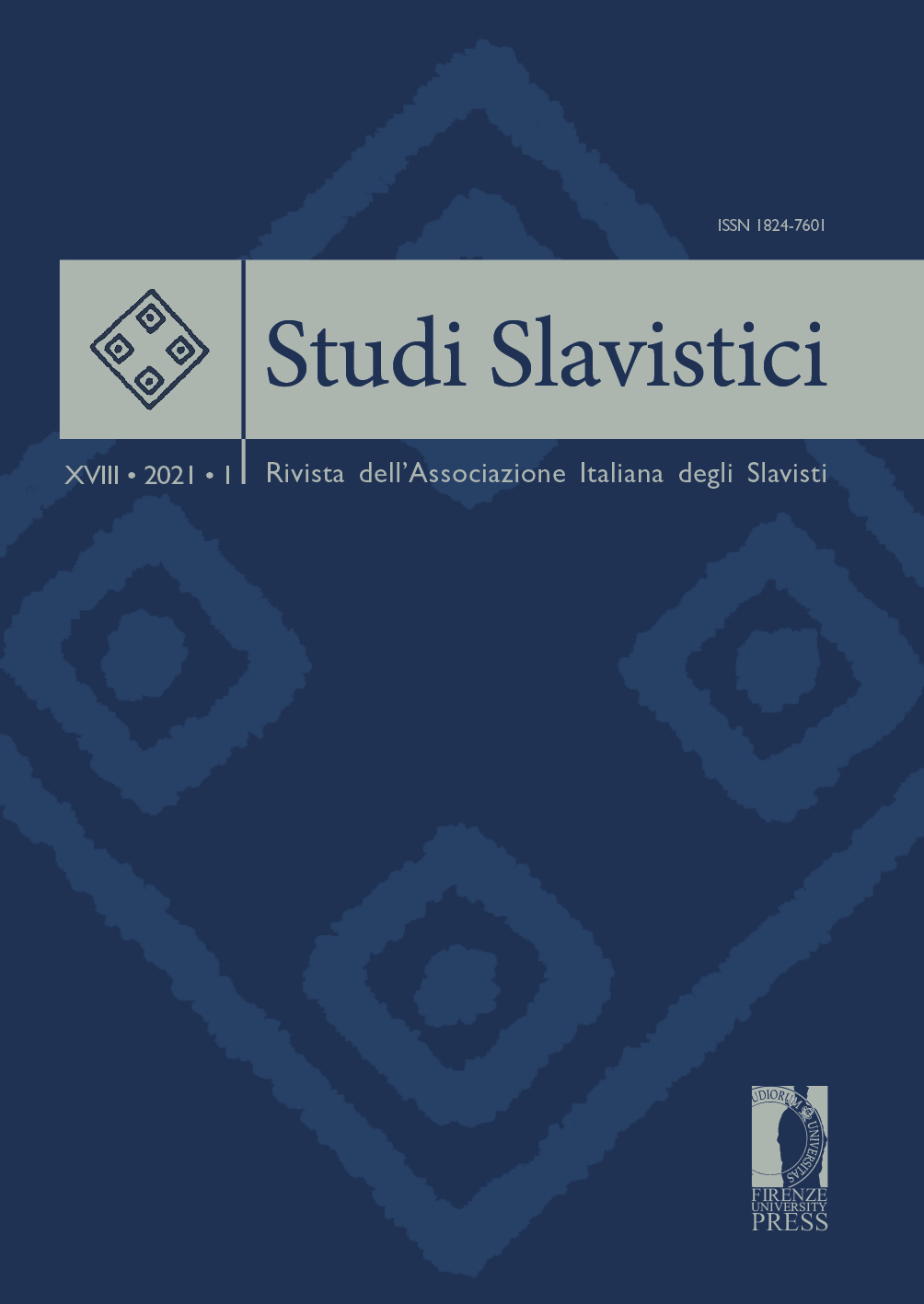‘Verbal Pictures’ in Seventeenth-Century Orthodox Sermons: Predmova svjaščenničeskaja pri šljube malžen’skom in Trebniks, L’viv 1644 and 1645
Published 2021-07-20
Keywords
- Orthodox Sermon,
- Trebnik,
- Verbal Pictures,
- Mnemotechnics,
- Emblems
- Robert Holcot,
- Michail Slezka,
- Arsenij Želiborskij ...More
Abstract
This paper puts forward some hypotheses on the sources of a ‘verbal picture’, that is to say allegorical love poetry, in a prosta mova marriage sample sermon addressed to laity and found in two Orthodox Ritual (Trebnik) editions: the first is by the publisher Michail Slezka (L’viv 1644) and the second by the bishop Arsenij Želiborskij (L’viv 1645). I shall argue that that the very combination of vernacular homiletic material and traditional ecclesiastical rites therein found goes back to sixteenth-century Polish Catholic Rituals; in the Orthodox Church of the Polish-Lithuanian Commonwealth, this model was introduced for the first time in the Ritual of the Orthodox Brotherhood of Vilnius (1621). The verbal picture analysed in this paper draws on Pictura amoris sive amicitiae, a short moralistic text written by the English Dominican Robert Holсot (ca. 1290-1349) which appears in his exegetical voluminous work In Librum Sapientiae Regis Salomonis Praelectiones ccxiii (ca. 1333-1342). Popular among late thirteenth-early fourteenth century English Dominicans, verbal pictures did not rely on earlier samples and were a literary product, a sort of exemplum or mnemonic tool for preachers to memorize abstract concepts. Since the sixteenth century, works of different genre reproduced Holcot’s verbal picture, without any attribution to its author, as emblem to create the so-called emblemata nuda (‘naked emblems’), which describe images but lack illustrations. The article suggests that the author(-s) of the Orthodox marriage sample sermon used a textbook on rhetoric Orator extemporaneus, seu artis oratoriae breviarium bipartitum by Michael Radau (1617-1687) as his main source, of which several manuscripts had started circulating by 1644. The article also presents some concluding remarks about the authorship of the marriage sample sermon.


